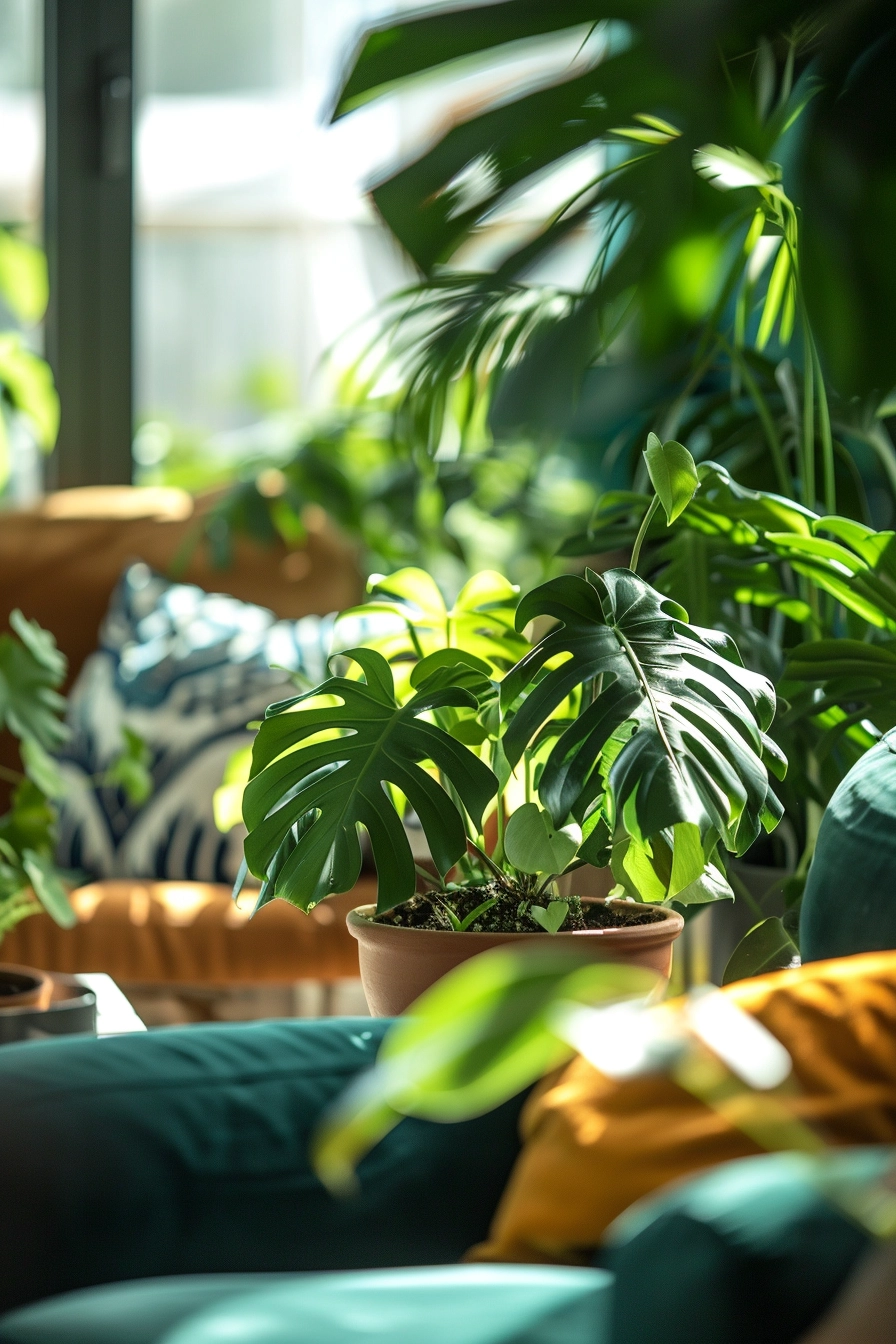Repotting your houseplants is an essential part of their care routine. It ensures they receive fresh nutrients and creates an optimal growing environment. Whether you’re a seasoned plant parent or just starting your indoor gardening journey, knowing how to repot your houseplants correctly is crucial for their well-being and long-term health.
When it comes to repotting, it’s important to consider the best time, the right soil, and the proper technique. In this houseplant repotting guide, I will walk you through the process, providing you with helpful tips to make it a seamless experience for both you and your plants.
Key Takeaways:
- Repotting your houseplants is necessary to give them fresh nutrients and create an optimal growing environment.
- Signs that indicate it’s time to repot include overcrowded roots, stunted growth, and water drainage issues.
- The best time to repot houseplants is in the spring, when they are actively growing.
- Choose a well-draining soil or potting mix specifically formulated for indoor plants.
- When repotting, gently loosen the roots, place the plant in a slightly larger pot, and fill it with the new soil.
Now that you understand the importance of repotting houseplants and the key factors to consider, let’s dive into the signs that indicate it’s time to repot and the best timing for repotting in the next section.
When to Repot Your Houseplants: Signs and Timing
Knowing when to repot your houseplants is crucial for their health and growth. Repotting at the right time ensures that your plants have enough space to grow their roots and access fresh nutrients. Here are some signs that indicate it’s time to repot and the best timing for repotting:

Signs to Repot Houseplants
- Roots emerging from the drainage holes: If you see roots poking out of the drainage holes of your pot, it’s a clear sign that your plant has outgrown its current container.
- Stunted growth: If your houseplant’s growth has slowed down significantly, it may be due to a lack of space in its current pot.
- Water drains too quickly: When you water your plant and the water drains out quickly without moistening the soil, it can indicate that the potting mix is compacted and not holding water properly.
- Potting mix has broken down: If the potting mix in your plant’s container starts to smell bad or looks depleted, it’s time to repot and provide fresh soil.
Best Time to Repot Houseplants
The best time to repot your houseplants is during their active growing season, typically in the spring or early summer. This is when they have the highest potential for root growth and can recover more quickly from the stress of repotting. Avoid repotting during the winter months when plants are dormant.
It’s also important to consider the specific growth habit and needs of your houseplant. Some plants may benefit from repotting more frequently, while others may prefer to be slightly root-bound. Research the specific requirements of your plant to determine the best timing for repotting.
Remember, each plant is unique, so pay attention to the signs and cues your houseplant is giving you. Regularly inspect your plants for signs of overgrowth or unhealthy roots, and adjust your repotting schedule accordingly.

Step-by-Step Guide to Repotting Your Houseplants
Repotting your houseplants is an essential task to ensure their well-being and thriving growth. By following these simple steps, you can repot your indoor plants with ease:
Step 1: Prepare the new pot
Choose a pot that is one size larger than the current one to allow room for growth. Ensure it has drainage holes at the bottom to prevent waterlogging. Thoroughly clean the pot with mild soap and water to remove any residue.
Step 2: Prepare the plant
Gently loosen the plant’s root ball using your hands or a small tool. Trim any dead or damaged roots. If the plant is root-bound, gently tease the roots out to promote healthy growth.
Step 3: Add fresh potting mix
Fill the new pot with a suitable potting mix, such as a well-draining blend of peat moss, perlite, and compost. Leave enough space at the top to accommodate the plant’s roots.
Step 4: Repot the plant
Place the plant in the center of the new pot, ensuring it sits at the same depth as before. Fill the remaining space with potting mix, gently firming it around the roots to provide stability.
Step 5: Water and care
After repotting, thoroughly water the plant until excess water drains from the bottom. Place the plant in its suitable growing location, ensuring it receives adequate light and temperature. Monitor its moisture levels and adjust watering accordingly.
By following these step-by-step instructions, you can successfully repot your houseplants, providing them with a fresh start and optimal growing conditions.


